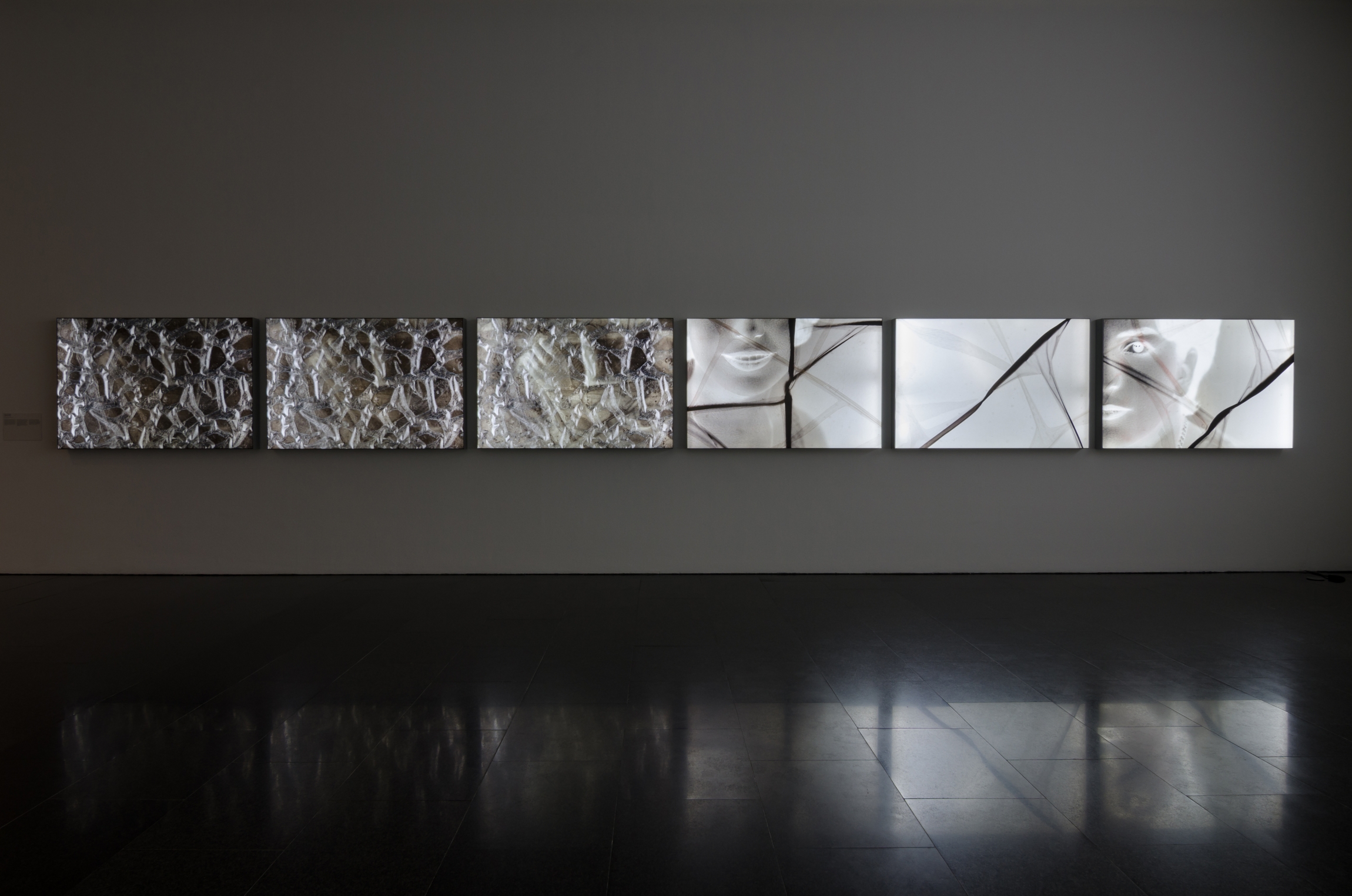The Body Of Film, 2017
The Body of Film, 2017
In May 1948 photographer Antranick Bakerdjian photographed his own destroyed home in the Armenian district of Jerusalem. Until then, he would regularly take photos of friends during outdoors excursions, religious ceremonies, and others. After May 1948 his negatives reflect a dramatic turn: he started documenting the fortification of the Armenian convent of St. James, where many families took refuge, and found himself at the center of an unfolding war for the following years.
Zaatari studied Bakerdjian’s negatives and decided to present the body of film itself as a testimony of war, focusing on erosion and on the different film brands on the edge of negatives, including Safety Film, Nitrate and Panchromatic. This is a story of war told through the deterioration of photographic emulsion. Most of the films presented here were produced at a time when the photographer was deprived of his darkroom, and was constantly moving from home to home.
Sculpting With Time, 2017
Sculpting With Time, 2017
Negatives bound to cellulose may react to change in temperature and humidity. Their versatile nature, compared to negatives bound to glass, makes them curl causing the emulsion displacement. These are extreme close-ups on two negative sheets that have morphed over time and developed air bubbles and channeling. The first represents the same detail photographed in three different light setups to capture the 3D quality of the object and to differentiate the bubbles from the image on the gelatin. The second represents close-ups of the subjects on the same negative, in this case a portrait of two ladies.

